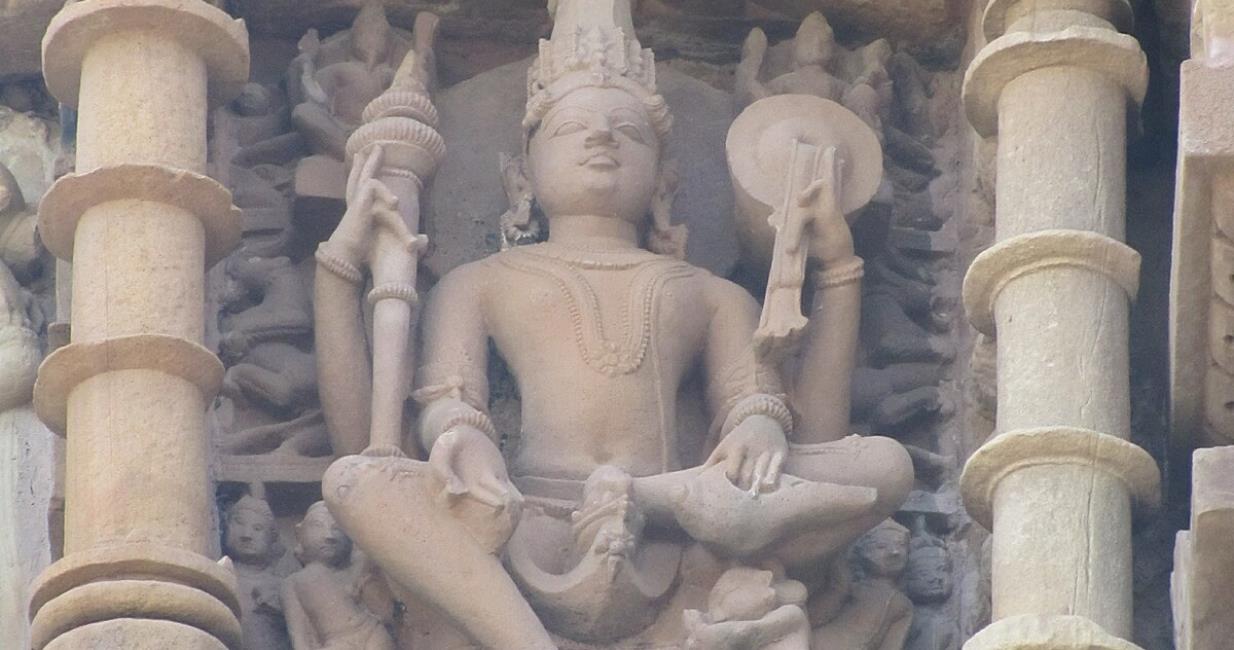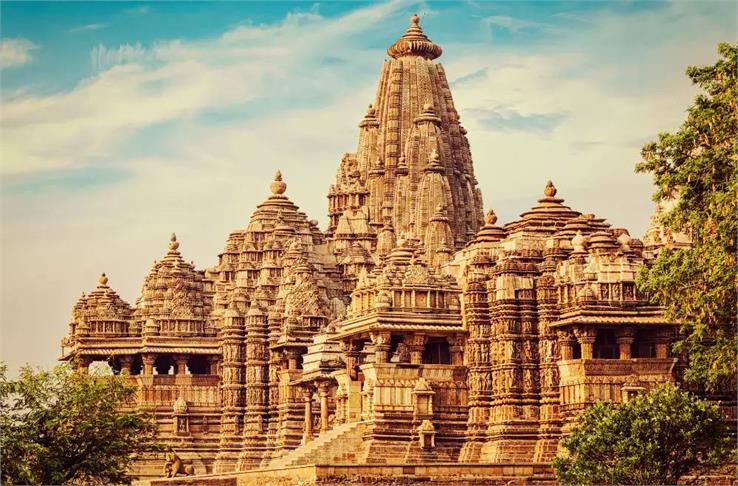Khajuraho Monuments: The Temples With Mysteries!

Khajuraho, a magnificent town in the Indian state of Madhya Pradesh, is located in the beautiful Chhatarpur District. It is home to the country’s largest group of medieval Hindus and Jain Temples, famous for their erotic sculptures. The Khajuraho temples are a UNESCO World Heritage Site since 1986 and are considered one of India's ‘Seven Wonders’. These monuments are known for their astonishing, sophisticated architectural designs and intricate erotic sculptures. The group of temples is considered one of the most important examples of medieval Hindu temple art and architecture in India.
Also Read: UNESCO World Heritage Sites
Style of Architecture | Skill of the Architectures | Representation of aspects of life
The temples at Khajuraho are known for their exquisite Nagara-style architecture, characterized by tall shikharas (spires), intricate carvings, and a distinct layout. Each temple is intricately adorned with sculptures and carvings that depict various aspects of life, including daily activities, deities, and, most famously, erotic art. Khajuraho is famous for a complex of temples built between the 9th and 11th centuries.
Also Read: Famous Handicrafts of Madhya Pradesh
The sculptures at the Khajuraho temples serve multiple purposes and can be attributed to various reasons.
1. Religious and Spiritual Depictions
Many of the sculptures on the Khajuraho temples depict various Hindu deities, scenes from Hindu mythology, and religious rituals. These sculptures serve as a means of conveying religious teachings and stories to the worshipers and visitors. They also act as a form of devotion, helping people connect with the divine.
2. Celebration of Life and Fertility
Some of the most famous sculptures at Khajuraho are the erotic ones, which depict explicit sexual scenes. While these sculptures may appear sensual, they are often interpreted as a celebration of life, love, and fertility. They symbolize the union of male and female energies, which is seen as essential for the creation of life. In this context, they are considered a part of the temple's overall theme of promoting well-rounded and harmonious living.
3. Aesthetic Beauty
The sculptures at Khajuraho are known for their exquisite craftsmanship and artistic beauty. They were created by highly skilled artisans and sculptors who took pride in their work. These sculptures were not just functional but were also intended to be aesthetically pleasing. They demonstrate the artistic capabilities of the time and serve as a testament to the talent and creativity of the artists.
Also Read: Ancient caves of Madhya Pradesh
4. Narrative and Symbolism
Many of the sculptures on the temples tell stories or convey symbolic meanings. For example, some sculptures depict scenes from Hindu epics like the Mahabharata and the Ramayana, conveying moral lessons and mythological narratives. Others represent various aspects of life, from daily activities to social and cultural practices.
5. Spiritual Significance
The depiction of explicit sexual acts in some sculptures is also seen by some scholars as a way to challenge human desires and attachments. In this interpretation, the sculptures serve as a reminder of the impermanence of physical pleasures and the importance of transcending worldly desires on the path to spiritual enlightenment.
It is important to note that the sculptures at Khajuraho are diverse, and their interpretation can vary. The temples are a rich tapestry of religious, cultural, and artistic expressions, reflecting the beliefs and values of the society that built them during the Chandela dynasty's rule.
The most famous aspect of the Khajuraho temples is the depiction of erotic and sensual scenes through sculptures. These sculptures are found on the exteriors of some temples and are considered a celebration of human emotions and sensuality as a part of life and spirituality. It is important to note that these sculptures represent just a small fraction of the overall artwork at Khajuraho.
Also Read: Famous Temples In Indore
Temple Groups
The Khajuraho Group of Monuments is divided into three main groups:
1. Western Group
The western group is the largest and most famous group, which includes some of the most well-preserved temples, such as the Kandariya Mahadeva Temple, Lakshmana Temple, and Matangesvara Temple.
2. Eastern Group
The eastern group consists of a series of smaller temples and is less visited compared to the Western Group.
3. Southern Group
The southern group includes two temples known for their unique architectural features: the Dulhadev Temple and the Chaturbhuj Temple.
UNESCO World Heritage Site
In 1986, the Khajuraho Group of Monuments was designated as a UNESCO World Heritage Site in recognition of its cultural and historical significance. The exact reason for the erotic sculptures is still debated among historians, with theories ranging from celebrating love and fertility to depicting the merging of the spiritual and physical realms.
Over the years, efforts have been made to preserve and restore the temples to maintain their historical and architectural significance. The sculptures have also been a subject of study and conservation. Today, the Khajuraho Group of Monuments is a popular tourist destination and attracts visitors from around the world who come to admire its astonishing architecture, intricate carvings, and the rich cultural heritage it represents.











